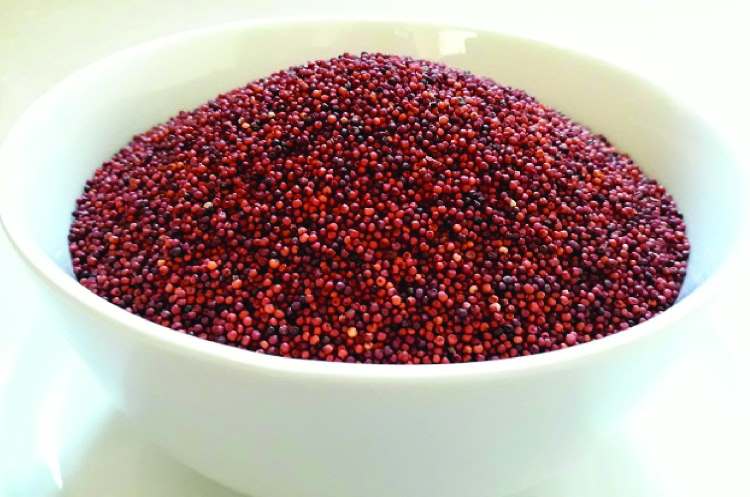India stands on the cusp of a millet revolution, driven by concerted efforts from the government and diverse stakeholders. Initiatives such as the National Food Security Mission, Rashtriya Krishi Vikas Yojana, and Pradhan Mantri Fasal Bima Yojana have infused significant funds to boost cultivation of millets. The Millets Mission seeks to expand cultivation to 20 million hectares and increase production to 40 million tonnes by 2025, with an allocation of Rs 500 crore from 2021-22 to 2024-25. The mission seeks to increase the cultivation area, enhance millet-based value chains, and promote entrepreneurship in this sector.
India is the world’s largest producer and the second-largest exporter of millets. As per the US Department of Agriculture’s Foreign Agricultural Service, India accounted for 39% of the world’s millet production in 2022, producing about 120 lakh tonne out of a global total of 304.8 lakh tonne. Niger and China are other large producers which, together with India, account for nearly half of the global production.
READ I Uttarakhand must chart a path of inclusive, sustainable growth
Challenges to millets leadership
India’s leadership in millet production is not without challenges. Mastering the complex dynamics of international trade, especially the fluctuating tariffs and stringent quality standards of the global market, is crucial for maintaining India’s competitive edge. Efforts to bolster millet exports have met with both opportunities and obstacles, underscoring the need for strategic trade agreements and quality improvements.
Rajasthan tops the list of millet producing states of India, followed by Maharashtra, Karnataka, and Uttar Pradesh. These four states collectively contribute to almost 70% of the national production. To enhance millet consumption, the government promotes inter-state transportation, advance subsidy, and has extended the distribution period of these commodities to 6-10 months.
Several state-level projects, including the Andhra Pradesh Drought Mitigation Project and the Odisha Particularly Vulnerable Tribal Groups Empowerment and Livelihoods Improvement Programme, have made significant strides in promoting millet cultivation, forming farmer-producer organisations (FPOs), and empowering marginalised groups.
In research and development, institutions such as the Indian Institute of Food Processing Technology, Central Food Technological Research Institute, and the International Crops Research Institute for the Semi-Arid Tropics are playing pivotal roles. These entities introduce innovative millet-based products, contribute ready-to-eat snacks, and develop high-yielding, disease-resistant millet varieties.
Innovations in millet processing technology are pivotal in transforming millets into a crop for the future. Advanced processing techniques that enhance the nutritional value of millet-based products while ensuring longer shelf life are becoming increasingly important. These technological advancements are crucial for making millet-based products more appealing to both domestic and international consumers. Collaborations with organisations like the Consultative Group for International Agricultural Research strengthen India’s millet research capabilities.
Despite these efforts, millets face challenges, including exclusion from the Public Distribution System in many states, a residue of pro-wheat and paddy policies from the Green Revolution era. This bias disadvantages millets, hindering their economic viability. Accessibility issues and misconceptions about millets contribute to consumer reluctance, while profitability concerns among stakeholders due to lower yields and an unorganized supply chain pose additional barriers.
To bolster millet production, integrating millets into the PDS, re-evaluating policies favouring wheat and paddy, and investing in millet-centric research are essential steps. Empowering farmers through initiatives like Krishi Vigyan Kendra and incentives for water-efficient practices can motivate a shift towards millets. Direct financial support and incentives for millet farmers, including subsidies for seeds, equipment, and access to affordable loans, are essential for reducing the economic barriers to millet cultivation. These measures not only encourage farmers to adopt millet but also ensure the financial viability of their operations, contributing to the overall growth of the millet sector.
A robust supply chain is crucial for efficiently reaching consumers. The government can facilitate market linkages, establish quality standards, and invest in mechanised post-harvest processing technologies. Consumer awareness campaigns and incorporating millets into school nutrition programs can change perceptions and foster demand.
Millet cultivation offers significant environmental benefits, including lower water usage and a smaller carbon footprint compared with traditional crops like rice and wheat. Promoting millet as a sustainable agricultural practice not only contributes to environmental conservation but also aligns with global efforts to combat climate change.
The surge in consumer interest towards healthier and more sustainable dietary choices marks a significant shift in the market. Millet’s nutritional benefits, coupled with its environmental sustainability, position it well within this trend. Understanding and leveraging these consumer preferences through targeted marketing and product development can greatly enhance millet’s market share.
Encouraging entrepreneurship in the millet sector, providing financial assistance, and fostering innovation through collaboration with food processing institutes are vital. Government support for institutions like the Indian Institute of Millets Research can accelerate the development of high-yielding and disease-resistant varieties. Ensuring policy coherence and regular consultations with stakeholders will refine policy approaches. India’s millet revolution requires a synchronized effort from all stakeholders to shift towards sustainable agriculture, improve nutritional outcomes, and economically empower those involved in the millet value chain.
(Dr Naliniprava Tripathy is Professor (Finance &Control) at IIM Shillong. Dr Priya Shah is Assistant Professor of Economics at L J University, Ahmedabad.)

